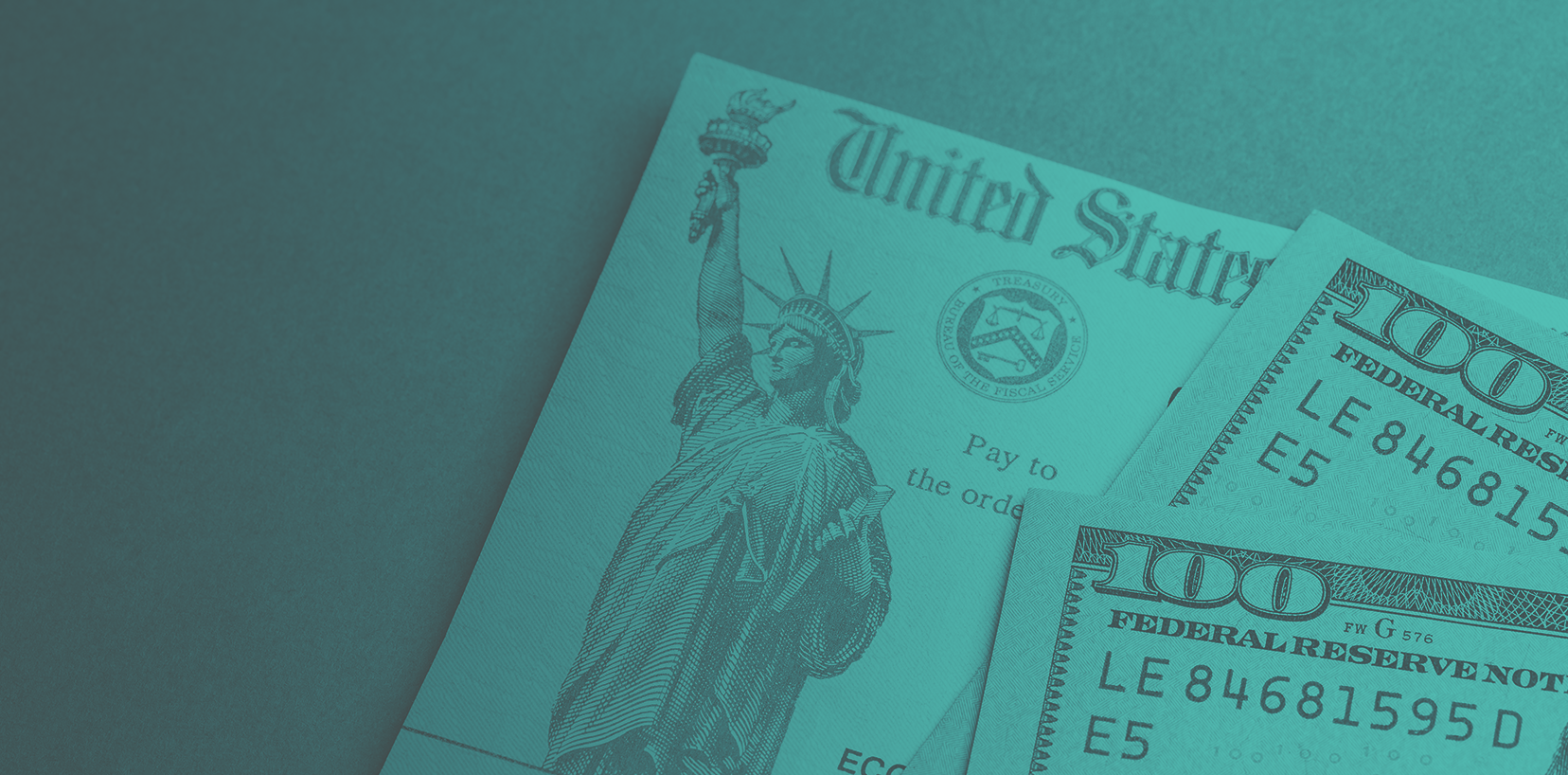
On December 27, 2020, President Trump signed into law H.R. 133, the Consolidated Appropriations Act, 2021 (the Act). Included among the Act’s nearly 5,600 pages are provisions related to COVID-19 pandemic relief. Key tax provisions include: (1) Paycheck Protection Program (PPP) updates, including the allowance of deductions for qualified expenses paid for with PPP loan proceeds that are subsequently forgiven, the extension of the program, the introduction of “second draw” PPP loans, and the expansion of eligible expenses for which PPP loan proceeds can be spent; (2) the extension of paid sick and family leave and family credits for wages paid through March 31, 2021; and (3) the extension of the employee retention credit under the Coronavirus Aid, Relief, and Economic Security (CARES) Act through June 30, 2021.
PPP Loan Updates
The PPP, which was created as part of the CARES Act, allows small businesses to obtain tax-free forgiveness of payroll costs and certain nonpayroll costs financed through the program’s loans.
Deductibility of Qualifying Expenses and Tax Impact of Forgiveness
In a reversal of previous Internal Revenue Service (IRS) guidance1, the Consolidated Appropriations Act, 2021 provides that businesses are permitted to deduct qualifying expenses paid for using PPP loan proceeds. The Act also affirms that gross income does not need to be increased by a recipient of PPP loan forgiveness because of such forgiveness. Concerning partnerships (including entities taxed as partnerships), the Act clarifies that any increase in a partner’s outside basis in the partnership because of a forgiven PPP loan being treated as tax-exempt income will be equal to that partner’s distributive share of the deductions that result from the costs giving rise to PPP loan forgiveness.
New Tranche of PPP Funds
The Act earmarks approximately $284 billion for new PPP loans and $20 billion for new Economic Injury Disaster Loans (EIDLs) to be administered by the Small Business Association (SBA) and made available to borrowers through March 31, 2021. Under the Act, a portion of the authorized funds are to be set aside for loans by community lenders and small depository lenders, loans to borrowers with ten or fewer employees, and loans of $250,000 or less to borrowers in designated low-income or moderate-income neighborhoods. The Act also provides that certain categories of borrowers previously ineligible for PPP loans are now explicitly eligible, including local chambers of commerce, housing cooperatives, certain news stations, churches, and religious organizations.
Second Draw PPP Loans
The Act also permits businesses that have already received a PPP loan to apply for a second PPP loan, which was previously not allowed under the program. Qualifying businesses that have fully used their first PPP loan may apply for a second loan as long as they have no more than 300 employees and had at least a 25 percent decline in gross receipts in any quarter of 2020 compared with the same quarter of 2019. Under the Act, the maximum amount of a business’s “second draw” loan is $2 million, and forgiveness is available on up to the entire amount of the loan. Businesses may submit an application for a second draw loan starting January 1, 2021; if approved, the second draw would provide a forgivable loan of two and a half times their monthly payroll costs (up to a maximum of $2 million). Businesses in the hard-hit accommodation and food services industries would be allowed a second draw loan of up to three and a half times their monthly payroll costs.
Covered Period Modification
The Act modifies the “covered period” concept, which is the period of time used to calculate the amount of eligible expenses paid or incurred that qualify for loan forgiveness. Borrowers who received loans before June 5, 2020, were previously given the option to choose between an eight-week covered period (as contemplated by the CARES Act2) or a twenty-four-week covered period (as contemplated by the Flexibility Act). The duration of this covered period impacts the amount of expenses that can be included in the borrower’s forgiveness calculation as well as the measurement period for potential reductions to loan forgiveness based on changes in full-time employee equivalents (FTEs) or salary or hourly wage reductions. Borrowers who received their loan on or after June 5, 2020, were required to use the longer twenty-four-week covered period, but in theory, were allowed to apply for forgiveness before the end of their covered period. The Act provides that PPP borrowers will be allowed to choose a covered period of any duration between eight and twenty-four weeks after loan origination.
Expanded Eligible Expenses
The Act expands the permitted expenses for which PPP loan proceeds can be used. In addition to the payroll expenses and covered utilities and rent permitted under the CARES Act, under the Consolidated Appropriations Act, 2021 borrowers can use loan proceeds for the following categories of expenses without jeopardizing loan forgiveness:
- Covered operations expenditures (e.g., payments for software, cloud computing, and human resources and accounting needs)
- Covered property damage costs (e.g., certain property damage, vandalism, or looting that occurred in 2020 not covered by insurance)
- Covered supplier costs (e.g., expenditures made under a contract for goods that was in effect before the covered period that are essential to the current operations of the business)
- Covered worker protection expenditures (e.g., expenditures for personal protective equipment needed to help a borrower comply with health and safety guidelines related to the COVID-19 pandemic)
To the extent there was doubt about whether group life, disability, vision, or dental insurance could be included as payroll costs, the Act clarifies that these expenses are included and thus are eligible uses that qualify for loan forgiveness.
Simplified Forgiveness Application for Small Loans
Finally, the Act streamlines the forgiveness application for businesses with forgivable loans of up to $150,000. Such businesses will be able to submit a simplified one-page form, online or on paper, that describes the number of employees who were able to be retained because of the loan.
Paid Leave Credits
The Act extends the period for which eligible employers may claim credits for providing paid sick and family leave in accordance with the Families First Coronavirus Response Act (FFCRA) from December 31, 2020, to March 31, 2021. The credits may be applied directly against employer and employee portions of Social Security and Medicare taxes and withheld federal income taxes. Notably, while the Act did not renew the FFCRA’s required paid sick and family leave for qualifying COVID-19 related circumstances, it does allow employers to count toward their paid leave credits the amount of leave wages they actually pay between January 1, 2021, and March 31, 2021. In other words, the paid leave requirements of the FFCRA terminate after December 31, 2020, but employers who choose to provide paid leave to employees in the first quarter of 2021 can count such payments toward their paid leave credits.
Employee Retention Credit
The Act expands the refundable employee retention credit (ERC), which may be applied against employer and employee portions of Social Security and Medicare taxes and the amount of federal income tax withheld. Under the Act, the period in which qualified wages must be paid to be counted toward the ERC was extended from December 31, 2020, to June 30, 2021. A number of changes to the ERC will take effect the first and second quarters of 2021, but will not affect 2020. These include changes to the maximum amount of wages paid to each employee that may be treated as qualified wages for calculating the credit, the percentage of qualified wages that may be counted toward the credit, and the definition of “large employer” for determining what payments may be counted as qualified wages.
The maximum amount of qualified wages paid per employee that an employer may take into account for calculating its ERC was redefined as $10,000 paid per quarter, as compared to the original maximum of $10,000 paid during the entirety of the period of which the ERC could be claimed. The percentage of qualified wages that may be counted toward the ERC available for each three-month quarter was increased to 70 percent, up from 50 percent, of the qualified wages that the employer paid to its employees in that quarter.
The definition of a “large employer” for purposes of determining which types of payments may be treated as qualified wages was revised to mean employers that had more than 500 employees on average in 2019, up from more than 100 employees on average in 2019. For large employers, qualified wages are those that an employer pays to an employee for a quarter even though the employee is not providing services. For employers other than large employers, qualified wages are those that an employer pays to an employee regardless of whether the employee ceased providing services.
An employer that had up to 500 employees in 2019 may, for the first and second quarters of 2021, receive an advance payment of the ERC for the quarter not to exceed 70 percent of the average quarterly wages paid in 2019.
Takeaways
The payroll-related provisions of the Act represent several changes to previous legislation and guidance. Businesses, including law firms and their business-owner clients, should carefully consider whether they are eligible for additional COVID-19 relief. New guidance from the SBA is anticipated in the coming weeks. An update will be provided once any such guidance is released, as any business with an existing PPP loan or that may apply for a new PPP loan in 2021 could be impacted. While 2020 will soon be behind us, the pandemic is not yet over. The Act extends relief measures into 2021, as the uncertainty and instability brought about by COVID-19 continues to impact the viability and profitability of businesses and the livelihoods of business owners well into the new year.
1The now-superseded IRS Notice 2020-32 and Revenue Ruling 2020-2 provided that businesses that had all or part of their PPP loans forgiven would not be permitted to deduct expenses paid for with forgiven loan proceeds.
2 Paycheck Protection Program Flexibility Act of 2020, Pub. L. 116-142, 134 Stat. 641.



